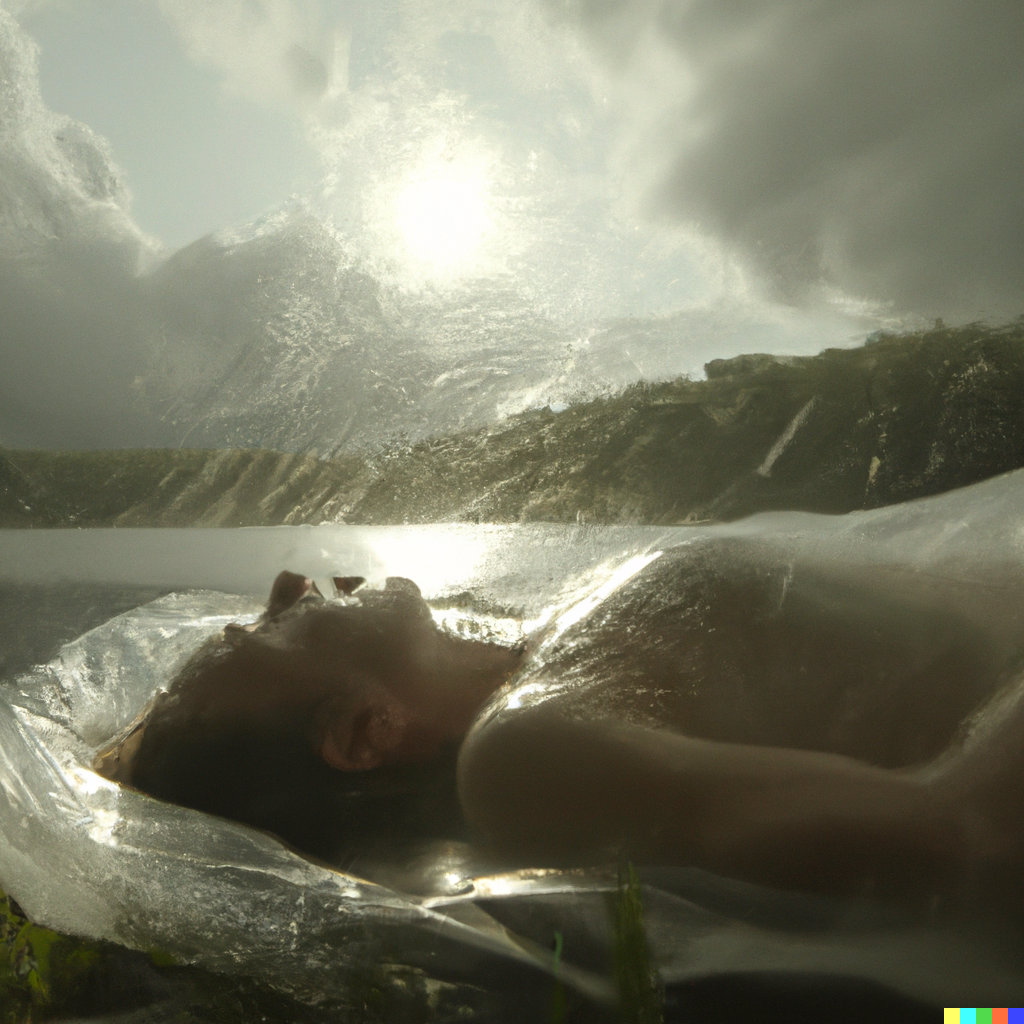Fiction artificielle / Artificial Fiction

En produisant des suites d’images grâce à dalle2, par exemple en adaptant l’Invention de Morel de Adolfo Bioy Casares, les manifestes autodestructifs de Gustav Meztger ou La femme 100 têtes de Max Ernst, je suis à chaque fois marqué par le fil narratif qui semble se former sous mes yeux.
Ainsi pour le premier, l’histoire commence comme des vacances classiques sur une île des Cyclades pour progressivement se transformer en un récit de fuite et de paranoïa. Pour le second, c’est un monde en ruines du capitalisme finissant et pour le troisième, c’est une narration de meurtre qui progressivement se déploie. Ce n’était pas là mon intention, que j’aurais incorporée dans les prompts, mais quelque chose qui semble se produire de lui-même et qui reste énigmatique. J’ai alors l’impression de ne faire que suivre ce fil narratif, hésitant et trouble, mais bien présent, opérant des choix dans la génération pour rendre cette tendance plus visible. Comment expliquer cette automatisation apparente de la narration?

C’est sans doute que ces images varient entre la répétition des clichés du dataset formés sur un socle culturel commun (un ensemble de plusieurs millions d’images paramétrisées, variabilisées) et l’émergence d’images singulières mêlant des catégories distantes de l’espace latent. C’est le passage d’une génération répétitive à une génération différentielle qui produit sans doute cet effet de narration, comme si l’imagination du regardeur reconnaissait du déjà vu pour se diriger sur de l’inattendu, allant et venant entre les deux sur une ligne de crête.
L’espace latent de l’imagination artificielle a la capacité d’articuler les deux univers visuels et à structurer une étrange familiarité entre la banalité des clichés et l’événement onirique. C’est précisément cet entre-deux qui fait émerger une narration implicite que nous pouvons reprendre au bond pour y projeter notre propre imagination, elle-même structurée par la reconnaissance d’une culture répétée et l’hallucination d’une culture réinventée.
L’imagination artificielle devient le nom porté par le parallélisme entre la génération automatisée d’images et la génération humaine d’images. Ce parallélisme n’est pas une identité, mais désigne deux lignes qui se suivent sans jamais se croiser, à la manière d’une influence des irréductibles différences entre l’imagination logique et l’imagination esthétique.
–

While producing sequences of images thanks to dalle2, for example by adapting Adolfo Bioy Casares’ Invention of Morel, Gustav Metzger’s self-destructive manifestos or Max Ersnt’s The Woman with 100 Heads, I am each time marked by the narrative thread that seems to form before my eyes. Thus for the first, the story begins as a classic vacation on an island in the Cyclades to gradually turn into a tale of escape and paranoia. For the second, it is a world in ruins and the third, a narrative of murder that gradually unfolds. This was not my intention, which I would have incorporated into the prompts, but something that seems to happen on its own and remains enigmatic. I then have the impression of only following this narrative thread, hesitant and troubled, but very present, making choices in the generation to make this tendency more visible.

It is undoubtedly that these images vary between the repetition of the clichés of the dataset formed on a common cultural base (a set of several million parameterized, variabilized images) and the emergence of singular images mixing distant categories of the latent space. It is the passage of a repetitive generation to a differential generation which undoubtedly produces this effect of narration, as if the imagination of the viewer recognized the déjà vu to direct itself on the unexpected.
The latent space of the artificial imagination has the capacity to articulate the two visual universes and to structure a strange familiarity between the banality of the clichés and the dreamlike event. It is precisely this in-between that makes emerge an implicit narration that we can take back to the jump to project our own imagination, itself structured by the recognition of a repeated culture and the hallucination of a reinvented culture.
Artificial imagination becomes the name given to the parallelism between the automated generation of images and the human generation of images. This parallelism is not an identity, but designates two lines that follow each other without ever crossing, in the manner of an influence of the irreducible differences between the logical imagination and the aesthetic imagination.
